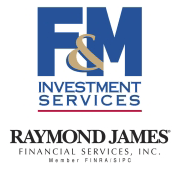 Clarksville, TN – When it comes to retirement planning, we typically tally up our daily expenses – housing, transportation, utilities, food, insurance, healthcare, entertainment – and budget accordingly for enough income to cover those wants and needs.
Clarksville, TN – When it comes to retirement planning, we typically tally up our daily expenses – housing, transportation, utilities, food, insurance, healthcare, entertainment – and budget accordingly for enough income to cover those wants and needs.
But we may not factor in an annual expense we can’t avoid: taxes. One reason may be that our complex tax code treats various sources of retirement income differently, so it can be hard to estimate what you’ll have after taxes using back of-the-envelope calculations.

For example, your $500,000 401(k) may only be worth $375,000 after 25% taxes. Since your federal tax bracket will likely be the highest tax you’ll face in retirement, it just makes sense to go over your own numbers with your accountant and financial advisor to maximize income and reduce taxes.
Note that your modified adjusted gross income affects your Medicare premiums.
In some cases, just an extra $1 of income could cost you hundreds or even thousands more in Medicare payments – another reason it pays to explore tax-saving strategies in retirement.
A Few Ideas
Here are a few suggestions. Be sure to talk to your professional advisors about these and other tax-saving strategies.
- Withdrawal order. An appropriate withdrawal strategy balances your need for income, tax mitigation and diversification, while also accounting for your personal goals. For example, qualified withdrawals from Roth accounts won’t be taxed, making them particularly useful down the road or in years when you find yourself in a higher tax bracket since those withdrawals won’t add to your taxable income. Your advisor and accountant can help account for your overall goals, while keeping you in as low a tax bracket as possible.
- Convert distributions to Roth. Conversely, you can take your distributions from your IRAs and convert them to Roth contributions in years when you have lower income (say the years you’re retired but not taking Social Security). What you’re doing is essentially paying income taxes on the money when you expect your rate to be lower.
- Opportunistically harvest losses from non-retirement accounts. This can help offset capital gains and up to $3,000 a year in ordinary income.
- Invest in health savings accounts (HSAs). Contributions are tax deductible and qualified distributions are tax-free when used for eligible healthcare costs, including those in retirement. Note, though, that there are eligibility rules that require you to be part of a highdeductible healthcare plan and not enrolled in Medicare.
- Investigate qualified charitable distributions from your IRA. If Congress once again authorizes QCDs, IRA owners can donate up to $100,000 a year to a charity tax-free in lieu of taking a required minimum distribution, potentially reducing their taxable income. Knowing where you fall among the various tax thresholds allows you to make decisions on how to keep more of your hard-earned savings in your pocket and not in Uncle Sam’s. It also provides context so you and your advisor can determine if you’ll need to adjust your allocations among taxable and nontaxable accounts and securities or if you’ll be able to make the most of tax-advantaged Roth retirement vehicles.
Asset allocation and diversification do not guarantee a profit nor protect against loss. Withdrawals from qualified accounts may be subject to income taxes, and prior to age 59½ a 10% federal penalty tax may apply. Unless certain criteria are met, Roth IRA owners must be 59½ or older and have held the IRA for five years before tax-free withdrawals are permitted.
Additionally, each converted amount may be subject to its own five-year holding period. Converting a traditional IRA into a Roth IRA has tax implications. Raymond James advisors do not render tax advise. You should discuss any tax matters with your appropriate tax professional.



